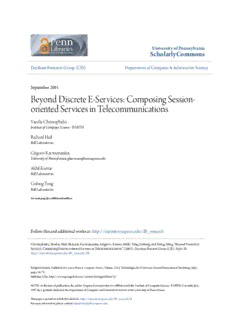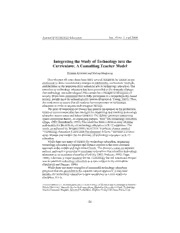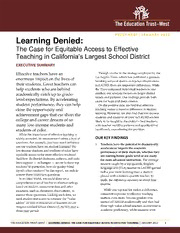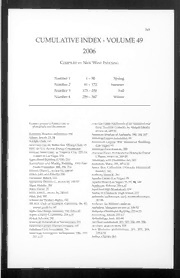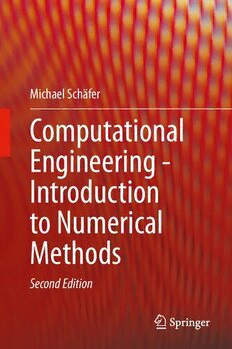
Computational Engineering - Introduction to Numerical Methods PDF
Preview Computational Engineering - Introduction to Numerical Methods
Michael Schäfer Computational Engineering - Introduction to Numerical Methods Second Edition Computational Engineering - Introduction to Numerical Methods ä Michael Sch fer Computational Engineering - Introduction to Numerical Methods Second Edition 123 Michael Schäfer Numerische Berechnungsverfahren Technische UniversitätDarmstadt Darmstadt, Hessen,Germany ISBN978-3-030-76026-7 ISBN978-3-030-76027-4 (eBook) https://doi.org/10.1007/978-3-030-76027-4 1stedition:©Springer-VerlagBerlinHeidelberg2006 2ndedition:©TheEditor(s)(ifapplicable)andTheAuthor(s),underexclusivelicensetoSpringer NatureSwitzerlandAG2022 Thisworkissubjecttocopyright.AllrightsaresolelyandexclusivelylicensedbythePublisher,whether thewholeorpartofthematerialisconcerned,specificallytherightsoftranslation,reprinting,reuseof illustrations, recitation, broadcasting, reproduction on microfilms or in any other physical way, and transmissionorinformationstorageandretrieval,electronicadaptation,computersoftware,orbysimilar ordissimilarmethodologynowknownorhereafterdeveloped. The use of general descriptive names, registered names, trademarks, service marks, etc. in this publicationdoesnotimply,evenintheabsenceofaspecificstatement,thatsuchnamesareexemptfrom therelevantprotectivelawsandregulationsandthereforefreeforgeneraluse. The publisher, the authors and the editors are safe to assume that the advice and information in this book are believed to be true and accurate at the date of publication. Neither the publisher nor the authors or the editors give a warranty, expressed or implied, with respect to the material contained hereinorforanyerrorsoromissionsthatmayhavebeenmade.Thepublisherremainsneutralwithregard tojurisdictionalclaimsinpublishedmapsandinstitutionalaffiliations. ThisSpringerimprintispublishedbytheregisteredcompanySpringerNatureSwitzerlandAG Theregisteredcompanyaddressis:Gewerbestrasse11,6330Cham,Switzerland Preface to the Second Edition For the second edition, several new topics that have gained attention in the com- putational engineering community in recent years have been added to the text. These include aeroacoustics problems, spectral methods, mesh-free methods, dis- continuous Galerkin methods, lattice-Boltzmann methods for flow simulation, hybrid RANS/LES turbulence models, adaptive time step control, algebraic multigrid methods, and sparse grids. Furthermore, a few minor aspects have been updated, some spelling and typing errorshavebeencorrected,theliteratureforsupplementaryandfurtherreadinghas been refreshed, and several new exercises have been added. Again the author would like to thank Springer-Verlag for the very pleasant cooperation. Darmstadt Michael Schäfer Spring 2021 v Preface to the First Edition Duetotheenormousprogressincomputertechnologyandnumerical methodsthat have been achieved in recent years, the use of numerical simulation methods in industry gains more and more importance. In particular, this applies to all engi- neering disciplines. Numerical computations in many cases offer a cost-effective and, therefore, very attractive possibility for the investigation and optimization of products and processes. Besides the need for developers of corresponding software, there is a strong— and still rapidly growing—demand for qualified specialists who are able to effi- ciently apply numerical simulation tools to complex industrial problems. The successful and efficient application of such tools requires certain basic knowledge abouttheunderlyingnumericalmethodologiesandtheirpossibilitieswithrespectto specific applications. The major concern of this book is the impartation of this knowledge in a comprehensive way. The text gives a practice-oriented introduction to modern numerical methods as they typically are applied in engineering disciplines like mechanical, chemical, or civil engineering. In corresponding applications, the by far most frequent tasks are related to problems from heat transfer, structural mechanics, and fluid mechanics, which, therefore, constitute a thematical focus of the text. The topic must be seen as a strongly interdisciplinary field in which aspects of numerical mathematics, natural sciences, computer science, and the corresponding engineering area are simultaneously important. As a consequence, usually, the necessary information is distributed in different textbooks from the individual disciplines. In the present text, the subject matter is presented in a comprehensive multidisciplinaryway, where aspects from thedifferent fields aretreated insofaras it is necessary for general understanding. Following this concept, the text covers the basics of modeling, discretization, and solution algorithms, whereas an attempt is always made to establish the rela- tionships to the engineering relevant application areas mentioned above. Overarching aspects of the different numerical techniques are emphasized and questions related to accuracy, efficiency, and cost-effectiveness, which are most vii viii PrefacetotheFirstEdition relevant for the practical application, are discussed. The following subjects are addressed in detail: (cid:129) Modeling: simple field problems, heat transfer, structural mechanics, fluid mechanics. (cid:129) Discretization: connection to CAD, numerical grids, finite-volume methods, finite-element methods, time discretization, properties of discrete systems. (cid:129) Solution algorithms: linear systems, non-linear systems, coupling of variables, adaptivity, multi-grid methods, parallelization. (cid:129) Special applications: finite-element methods for elasto-mechanical problems, finite-volume methods for incompressible flows, simulation of turbulent flows. The topics are presented in an introductory manner, such that besides basic mathematical standard knowledge in analysis and linear algebra no further pre- requisites are necessary. For possible continuative studies, hints for corresponding literature with reference to the respective chapter are given. Important aspects are illustrated by means of application examples. Many exemplary computations are done “by hand” help to follow and understand the numericalmethods.Theexercisesforeachchaptergivethepossibilityofreviewing theessentialsofthemethods.Solutionsareprovidedonthewebpagewww.fnb.tu- darmstadt.de/ceinm/. The book is suitable either for self-study or as an accompa- nyingtextbookforcorrespondinglectures.Itcannotonlybeusefulforstudentsof engineering disciplines but also for computational engineers in industrial practice. Many of the methods presented are integrated into the flow simulation code FASTEST, which is available from the author. Thetextevolvedonthebasisofseverallecturenotesfordifferentcoursesatthe Department of Numerical Methods in Mechanical Engineering at the Darmstadt University of Technology. It closely follows the German book Numerik im Maschinenbau (Springer, 1999) by the author, but includes several modifications and extensions. The author would like to thank all members of the department who have sup- ported the preparation of the manuscript. Special thanks are addressed to Patrick Bontoux andtheMSNM-GP group ofCNRSatMarseille for thewarmhospitality at the institute during several visits which helped a lot in completing the text in time. Sincere thanks are given to Rekik Alehegn Mekonnen for proofreading the English text. Last but not least the author would like to thank the Springer-Verlag for the very pleasant cooperation. Darmstadt Michael Schäfer Spring 2006 Contents 1 Introduction . . . . . . . . . . . . . . . . . . . . . . . . . . . . . . . . . . . . . . . . . . 1 1.1 Usefulness of Numerical Investigations . . . . . . . . . . . . . . . . . . 1 1.2 Development of Numerical Methods . . . . . . . . . . . . . . . . . . . . 4 1.3 Characterization of Numerical Methods . . . . . . . . . . . . . . . . . . 6 2 Modeling of Continuum Mechanical Problems . . . . . . . . . . . . . . . . 11 2.1 Kinematics . . . . . . . . . . . . . . . . . . . . . . . . . . . . . . . . . . . . . . . 12 2.2 Basic Conservation Equations . . . . . . . . . . . . . . . . . . . . . . . . . 16 2.2.1 Mass Conservation. . . . . . . . . . . . . . . . . . . . . . . . . . . 17 2.2.2 Momentum Conservation . . . . . . . . . . . . . . . . . . . . . . 18 2.2.3 Moment of Momentum Conservation . . . . . . . . . . . . . 19 2.2.4 Energy Conservation . . . . . . . . . . . . . . . . . . . . . . . . . 20 2.2.5 Material Laws . . . . . . . . . . . . . . . . . . . . . . . . . . . . . . 21 2.3 Scalar Problems . . . . . . . . . . . . . . . . . . . . . . . . . . . . . . . . . . . 21 2.3.1 Simple Field Problems . . . . . . . . . . . . . . . . . . . . . . . . 22 2.3.2 Heat Transfer Problems . . . . . . . . . . . . . . . . . . . . . . . 24 2.4 Structural Mechanics Problems . . . . . . . . . . . . . . . . . . . . . . . . 27 2.4.1 Linear Elasticity. . . . . . . . . . . . . . . . . . . . . . . . . . . . . 27 2.4.2 Bars and Beams. . . . . . . . . . . . . . . . . . . . . . . . . . . . . 31 2.4.3 Disks and Plates. . . . . . . . . . . . . . . . . . . . . . . . . . . . . 36 2.4.4 Linear Thermo-Elasticity. . . . . . . . . . . . . . . . . . . . . . . 40 2.4.5 Hyperelasticity . . . . . . . . . . . . . . . . . . . . . . . . . . . . . . 42 2.5 Fluid Mechanical Problems . . . . . . . . . . . . . . . . . . . . . . . . . . . 43 2.5.1 Incompressible Flows . . . . . . . . . . . . . . . . . . . . . . . . . 44 2.5.2 Inviscid Flows . . . . . . . . . . . . . . . . . . . . . . . . . . . . . . 46 2.6 Aeroacoustics Problems. . . . . . . . . . . . . . . . . . . . . . . . . . . . . . 47 2.7 Coupled Fluid-Solid Problems. . . . . . . . . . . . . . . . . . . . . . . . . 49 2.7.1 Modeling. . . . . . . . . . . . . . . . . . . . . . . . . . . . . . . . . . 50 2.7.2 Examples of Applications . . . . . . . . . . . . . . . . . . . . . . 52 ix x Contents 3 Discretization of Problem Domain . . . . . . . . . . . . . . . . . . . . . . . . . 61 3.1 Description of Problem Geometry . . . . . . . . . . . . . . . . . . . . . . 61 3.2 Numerical Grids . . . . . . . . . . . . . . . . . . . . . . . . . . . . . . . . . . . 63 3.2.1 Grid Types. . . . . . . . . . . . . . . . . . . . . . . . . . . . . . . . . 65 3.2.2 Grid Structure . . . . . . . . . . . . . . . . . . . . . . . . . . . . . . 66 3.3 Generation of Structured Grids . . . . . . . . . . . . . . . . . . . . . . . . 69 3.3.1 Algebraic Grid Generation . . . . . . . . . . . . . . . . . . . . . 71 3.3.2 Elliptic Grid Generation . . . . . . . . . . . . . . . . . . . . . . . 73 3.4 Generation of Unstructured Grids . . . . . . . . . . . . . . . . . . . . . . 75 3.4.1 Advancing Front Methods. . . . . . . . . . . . . . . . . . . . . . 75 3.4.2 Delaunay Triangulations . . . . . . . . . . . . . . . . . . . . . . . 77 4 Finite-Volume Methods. . . . . . . . . . . . . . . . . . . . . . . . . . . . . . . . . . 81 4.1 General Methodology . . . . . . . . . . . . . . . . . . . . . . . . . . . . . . . 81 4.2 Approximation of Surface and Volume Integrals. . . . . . . . . . . . 85 4.3 Discretization of Convective Fluxes. . . . . . . . . . . . . . . . . . . . . 88 4.3.1 Central Differences. . . . . . . . . . . . . . . . . . . . . . . . . . . 89 4.3.2 Upwind Techniques . . . . . . . . . . . . . . . . . . . . . . . . . . 90 4.3.3 Flux-Blending Technique . . . . . . . . . . . . . . . . . . . . . . 92 4.4 Discretization of Diffusive Fluxes . . . . . . . . . . . . . . . . . . . . . . 93 4.5 Non-Cartesian Grids . . . . . . . . . . . . . . . . . . . . . . . . . . . . . . . . 95 4.6 Discrete Transport Equation . . . . . . . . . . . . . . . . . . . . . . . . . . 98 4.7 Treatment of Boundary Conditions . . . . . . . . . . . . . . . . . . . . . 99 4.8 Algebraic System of Equations . . . . . . . . . . . . . . . . . . . . . . . . 101 4.9 Numerical Example. . . . . . . . . . . . . . . . . . . . . . . . . . . . . . . . . 104 5 Finite-Element Methods . . . . . . . . . . . . . . . . . . . . . . . . . . . . . . . . . 111 5.1 Galerkin Method. . . . . . . . . . . . . . . . . . . . . . . . . . . . . . . . . . . 111 5.2 Finite-Element Discretization. . . . . . . . . . . . . . . . . . . . . . . . . . 114 5.3 One-Dimensional Linear Elements. . . . . . . . . . . . . . . . . . . . . . 116 5.3.1 Discretization. . . . . . . . . . . . . . . . . . . . . . . . . . . . . . . 116 5.3.2 Global and Local View. . . . . . . . . . . . . . . . . . . . . . . . 119 5.4 Practical Realization . . . . . . . . . . . . . . . . . . . . . . . . . . . . . . . . 122 5.4.1 Assembling of Equation Systems . . . . . . . . . . . . . . . . 122 5.4.2 Computation of Element Contributions . . . . . . . . . . . . 124 5.4.3 Numerical Example . . . . . . . . . . . . . . . . . . . . . . . . . . 126 5.5 One-Dimensional Cubic Elements . . . . . . . . . . . . . . . . . . . . . . 127 5.5.1 Discretization. . . . . . . . . . . . . . . . . . . . . . . . . . . . . . . 128 5.5.2 Numerical Example . . . . . . . . . . . . . . . . . . . . . . . . . . 130 5.6 Two-Dimensional Elements. . . . . . . . . . . . . . . . . . . . . . . . . . . 133 5.6.1 Variable Transformation for Triangular Elements . . . . . 134 5.6.2 Linear Triangular Elements. . . . . . . . . . . . . . . . . . . . . 135 5.6.3 Numerical Example . . . . . . . . . . . . . . . . . . . . . . . . . . 137 Contents xi 5.6.4 Bilinear Parallelogram Elements . . . . . . . . . . . . . . . . . 143 5.6.5 Other Two-Dimensional Elements. . . . . . . . . . . . . . . . 145 5.7 Numerical Integration . . . . . . . . . . . . . . . . . . . . . . . . . . . . . . . 148 6 Other Discretization Methods . . . . . . . . . . . . . . . . . . . . . . . . . . . . . 155 6.1 Spectral Methods . . . . . . . . . . . . . . . . . . . . . . . . . . . . . . . . . . 155 6.1.1 Chebyshev Ansatz . . . . . . . . . . . . . . . . . . . . . . . . . . . 157 6.1.2 Error . . . . . . . . . . . . . . . . . . . . . . . . . . . . . . . . . . . . . 160 6.1.3 Extensions . . . . . . . . . . . . . . . . . . . . . . . . . . . . . . . . . 162 6.1.4 Numerical Examples. . . . . . . . . . . . . . . . . . . . . . . . . . 163 6.2 Mesh-Free Methods . . . . . . . . . . . . . . . . . . . . . . . . . . . . . . . . 164 6.3 Discontinuous Galerkin Methods . . . . . . . . . . . . . . . . . . . . . . . 167 7 Time Discretization. . . . . . . . . . . . . . . . . . . . . . . . . . . . . . . . . . . . . 171 7.1 Basics . . . . . . . . . . . . . . . . . . . . . . . . . . . . . . . . . . . . . . . . . . 171 7.2 Explicit Methods . . . . . . . . . . . . . . . . . . . . . . . . . . . . . . . . . . 176 7.3 Implicit Methods. . . . . . . . . . . . . . . . . . . . . . . . . . . . . . . . . . . 179 7.4 Numerical Example. . . . . . . . . . . . . . . . . . . . . . . . . . . . . . . . . 183 8 Solution of Algebraic Systems of Equations . . . . . . . . . . . . . . . . . . 189 8.1 Linear Systems. . . . . . . . . . . . . . . . . . . . . . . . . . . . . . . . . . . . 189 8.1.1 Direct Solution Methods. . . . . . . . . . . . . . . . . . . . . . . 190 8.1.2 Basic Iterative Methods . . . . . . . . . . . . . . . . . . . . . . . 191 8.1.3 ILU Methods . . . . . . . . . . . . . . . . . . . . . . . . . . . . . . . 193 8.1.4 Convergence of Iterative Methods. . . . . . . . . . . . . . . . 196 8.1.5 Conjugate Gradient Methods. . . . . . . . . . . . . . . . . . . . 198 8.1.6 Preconditioning . . . . . . . . . . . . . . . . . . . . . . . . . . . . . 200 8.1.7 Comparison of Solution Methods . . . . . . . . . . . . . . . . 201 8.2 Non-linear and Coupled Systems. . . . . . . . . . . . . . . . . . . . . . . 204 9 Properties of Numerical Methods . . . . . . . . . . . . . . . . . . . . . . . . . . 209 9.1 Properties of Discretization Methods . . . . . . . . . . . . . . . . . . . . 209 9.1.1 Consistency . . . . . . . . . . . . . . . . . . . . . . . . . . . . . . . . 210 9.1.2 Stability. . . . . . . . . . . . . . . . . . . . . . . . . . . . . . . . . . . 213 9.1.3 Convergence . . . . . . . . . . . . . . . . . . . . . . . . . . . . . . . 216 9.1.4 Conservativity . . . . . . . . . . . . . . . . . . . . . . . . . . . . . . 218 9.1.5 Boundedness . . . . . . . . . . . . . . . . . . . . . . . . . . . . . . . 219 9.2 Estimation of Discretization Error . . . . . . . . . . . . . . . . . . . . . . 222 9.3 Influence of Numerical Grid . . . . . . . . . . . . . . . . . . . . . . . . . . 225 9.4 Cost-Effectiveness. . . . . . . . . . . . . . . . . . . . . . . . . . . . . . . . . . 228 10 Finite-Element Methods in Structural Mechanics . . . . . . . . . . . . . . 233 10.1 Structure of Equation System . . . . . . . . . . . . . . . . . . . . . . . . . 233 10.2 Finite-Element Discretization. . . . . . . . . . . . . . . . . . . . . . . . . . 235 10.3 Examples of Applications . . . . . . . . . . . . . . . . . . . . . . . . . . . . 239
The list of books you might like

The 48 Laws of Power

The Spanish Love Deception

Believe Me

Can’t Hurt Me: Master Your Mind and Defy the Odds
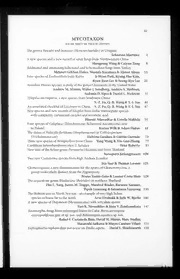
Mycotaxon 2006: Vol 96 Table of Contents

Ocio humanista: dimensiones y manifestaciones actuales del ocio

Это было навсегда. 1968-1985.
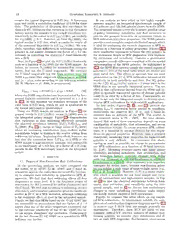
Optical Star-Formation Rate Indicators
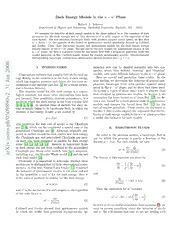
Dark Energy Models in the w - w' Plane
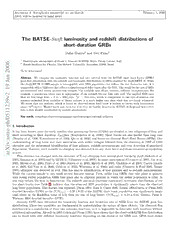
The BATSE-Swift luminosity and redshift distributions of short-duration GRBs
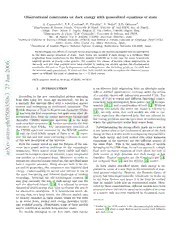
Observational constraints on dark energy with generalized equations of state

Brief Couples Therapy Homework Planner (PracticePlanners)

The Winds of Chance by Rex Beach

C. J. Cherryh - Union Alliance - Finity' s End

Great-winged Petrel Pterodroma macroptera in Brazil

Les tribulations d'un chinois en Chine by Jules Verne
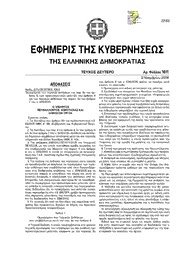
Greek Government Gazette: Part 2, 2006 no. 1611
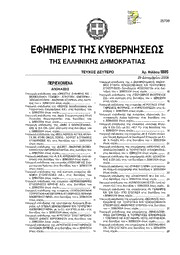
Greek Government Gazette: Part 2, 2006 no. 1885

Cada hora muere una persona por culpa del tabaco en Andalucía
